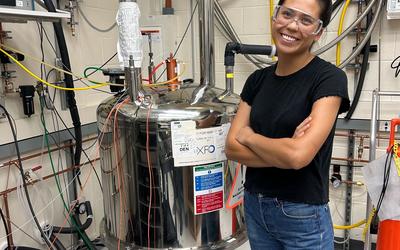News and Updates
Anyone for Anyons?
Researchers have demonstrated that a strange type of quantum particle called the anyon, believed to exist in only two dimensions, can also be created in one dimension. Further studies exploring different types of one-dimensional anyons could bring scientists one step closer to using the particles as a fundamental unit of memory in a quantum computer. A team led by Harvard scientists Joyce Kwan and
Blog Posts
Working to Improve Small-Scale MRIs: My Summer as a SURF Student at NIST
I didn’t really know what to expect on the first day of my virtual Summer Undergraduate Research Fellowship (SURF) program at the National Institute of Standards and Technology (NIST). At 12:00 p.m., with my second cup of coffee in hand, I sat down at my desk and hopped on the first of many video calls. Brandi Toliver, the SURF director, kicked off the program with introductions of key NIST










